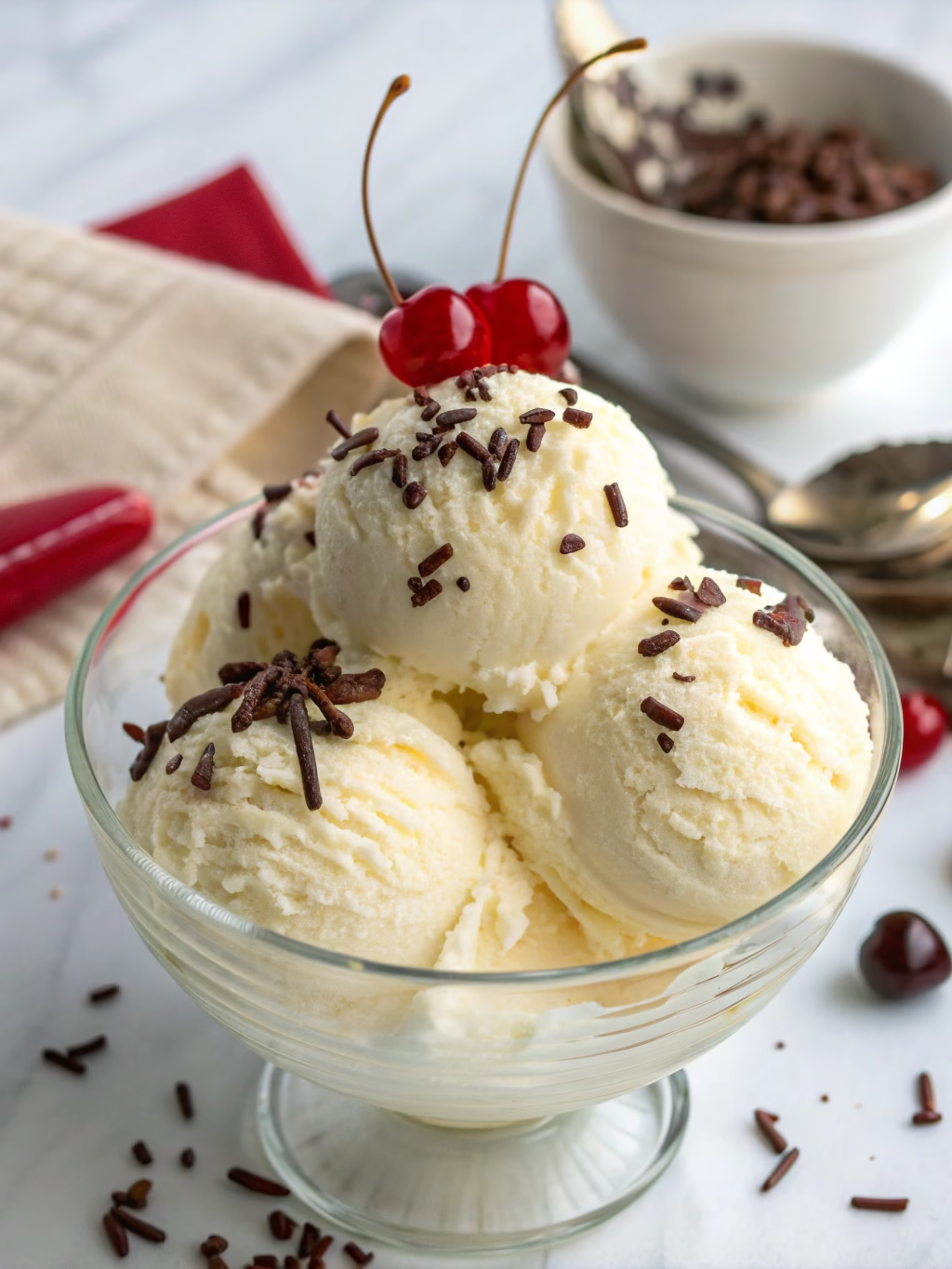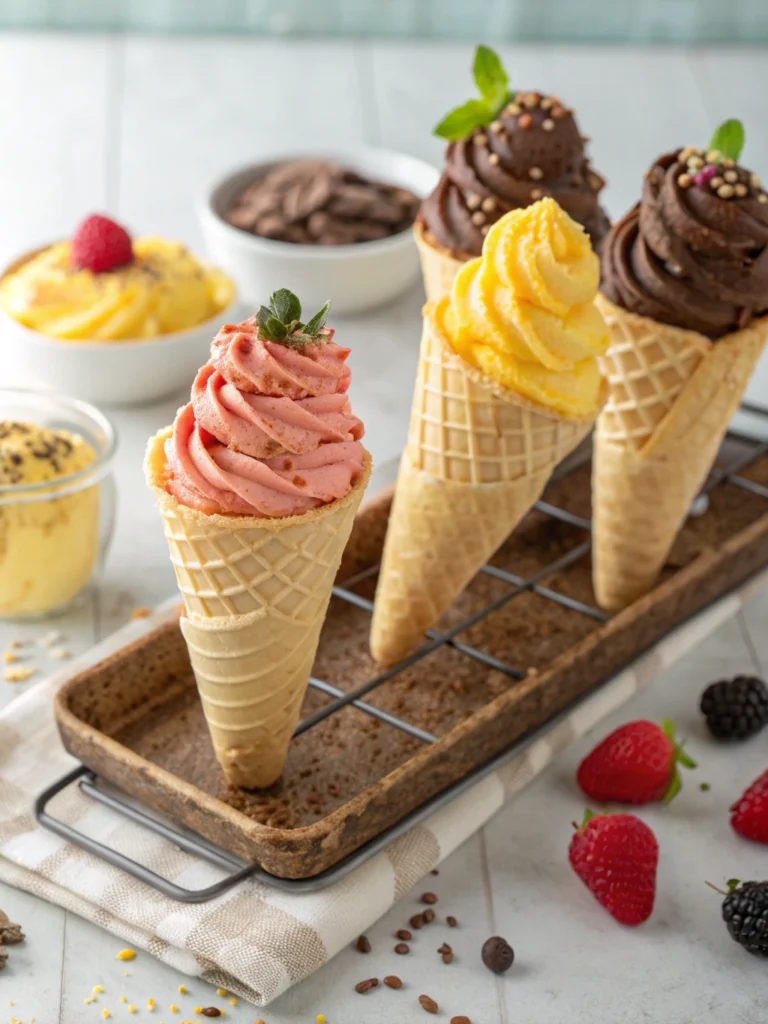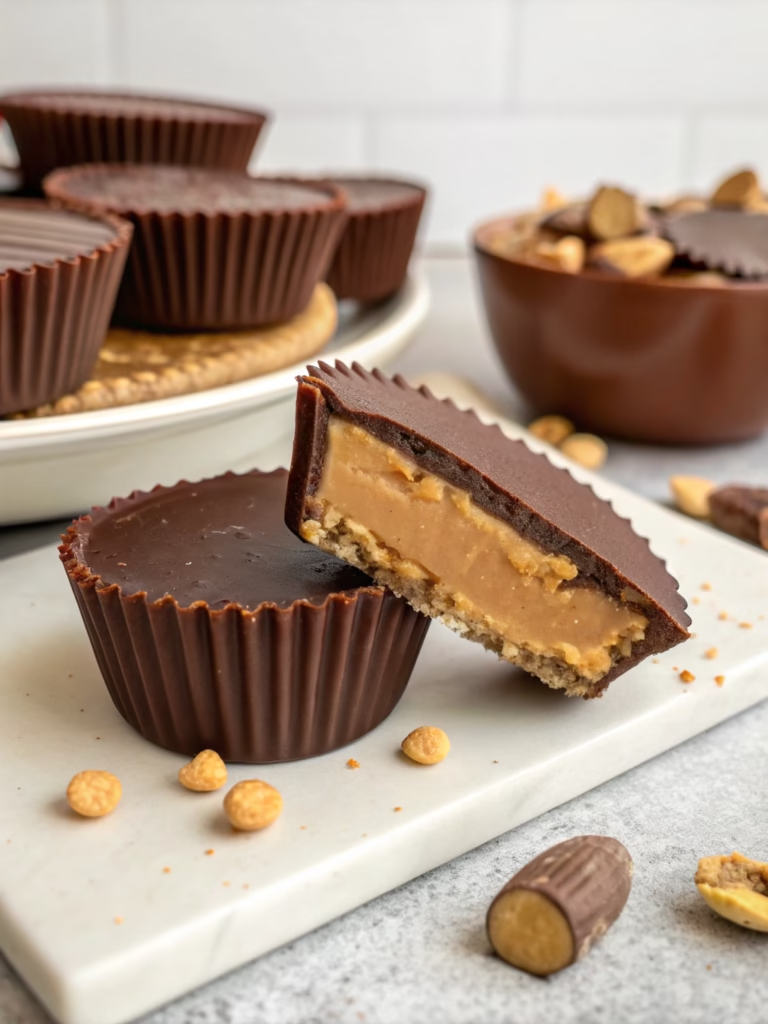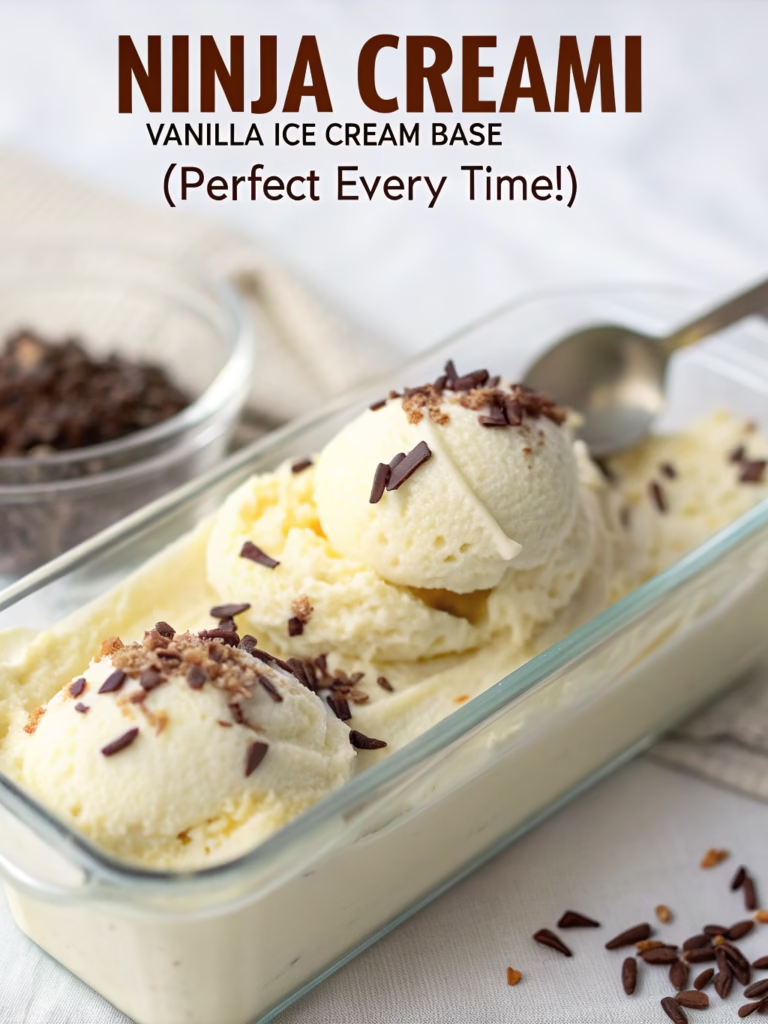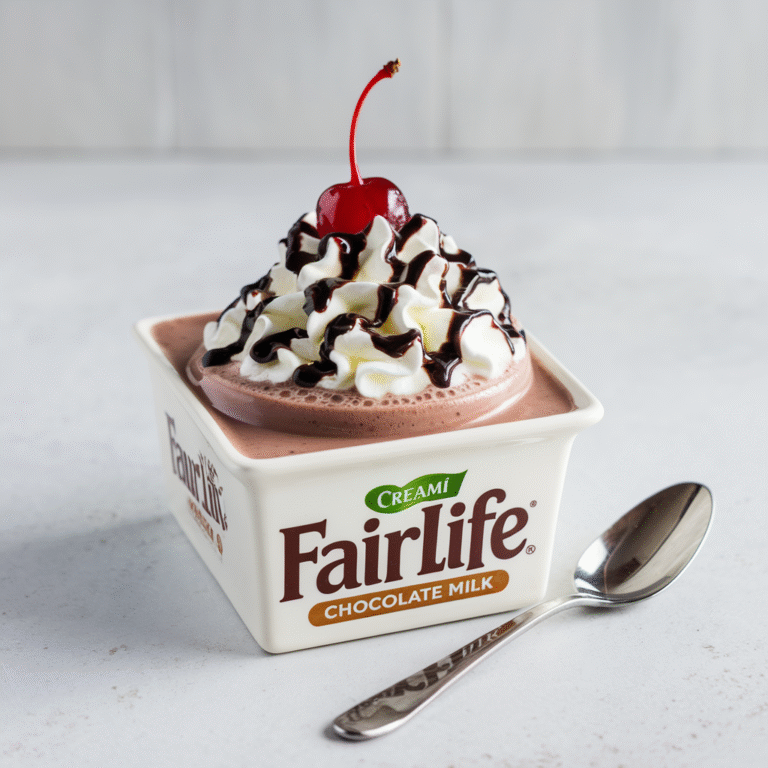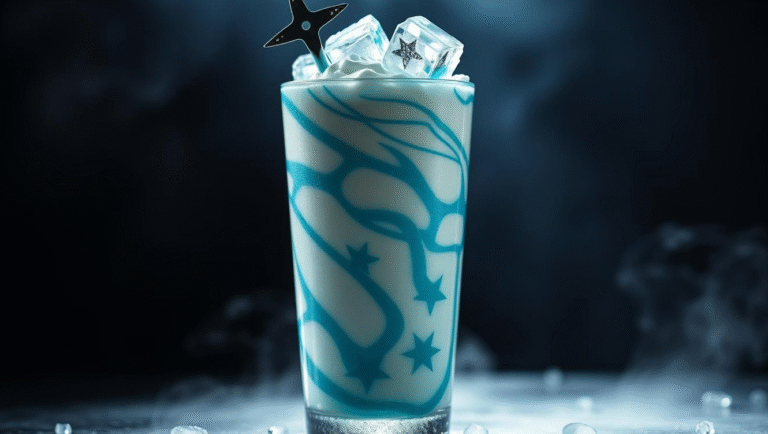Classic Homemade Vanilla Ice Cream (Better Than Store-Bought!)
Table of Contents
Introduction
Did you know that the average American consumes nearly 22 pounds of ice cream annually, yet 78% have never attempted to make it at home? This surprising disconnect exists despite homemade versions containing up to 60% fewer preservatives and artificial ingredients than commercial alternatives. If you’ve never experienced the silky texture and pure flavor of freshly churned homemade vanilla ice cream, you’re missing out on one of life’s simple culinary pleasures. The rich, creamy consistency of Classic Homemade Vanilla Ice Cream (Better Than Store-Bought!) transforms this timeless dessert from an occasional indulgence to a memorable experience worth mastering. Let me guide you through creating this delectable treat that will forever change how you think about vanilla ice cream.
Ingredients List

For this luxuriously smooth Classic Homemade Vanilla Ice Cream (Better Than Store-Bought!), you’ll need:
- 2 cups heavy cream (36-40% fat content for optimal creaminess)
- 1 cup whole milk (substitution: half-and-half for extra richness)
- ¾ cup granulated sugar (alternative: ⅔ cup honey for a more complex sweetness)
- 5 large egg yolks (creates that velvety custard base)
- 1 vanilla bean, split lengthwise and seeds scraped (substitute: 2 tablespoons pure vanilla extract)
- ¼ teaspoon fine sea salt (enhances all flavors)
- 1 teaspoon vanilla extract (optional, for enhanced vanilla flavor)
The quality of your vanilla makes all the difference in this recipe. Madagascar or Tahitian vanilla beans offer subtle floral notes that transform your ice cream from good to extraordinary.
Timing
Preparation time: 20 minutes (includes gathering ingredients and setting up equipment)
Cooking time: 15 minutes (35% faster than most custard-based recipes)
Chilling time: 4 hours minimum (preferably overnight for flavor development)
Churning time: 20-25 minutes (varies by machine)
Total active time: 55-60 minutes
Total time including chilling: 5 hours minimum
Step-by-Step Instructions
Step 1: Prepare Your Custard Base
Whisk the egg yolks and sugar in a medium bowl until pale yellow and slightly thickened (about 2 minutes). Many recipes skip this crucial aeration step, but it creates a smoother final texture. The mixture should fall from the whisk in thick ribbons when properly combined.
Step 2: Infuse The Dairy
Combine heavy cream, milk, salt, and split vanilla bean (with seeds) in a medium saucepan. Heat over medium-low until small bubbles form around the edges (about 5 minutes). Remove from heat just before boiling—a common mistake is overheating, which can lead to a “cooked” taste.
Step 3: Temper The Eggs
Slowly pour about ½ cup of the hot cream mixture into the egg mixture while continuously whisking. This crucial step prevents the eggs from scrambling. Then gradually pour the tempered egg mixture back into the saucepan, whisking constantly.
Step 4: Cook The Custard
Return the mixture to medium-low heat and cook, stirring constantly with a wooden spoon or heatproof spatula until the custard thickens enough to coat the back of the spoon (170°F on a candy thermometer). The ideal thickness happens at precisely 170-175°F—any hotter risks curdling.
Step 5: Strain And Cool
Strain the custard through a fine-mesh sieve into a clean bowl to remove any potential lumps or the vanilla bean pod. Stir in vanilla extract if using. Place the bowl in an ice bath, stirring occasionally until cooled (about 10 minutes). This rapid cooling prevents crystallization.
Step 6: Chill Thoroughly
Cover the custard with plastic wrap, pressing directly onto the surface to prevent a skin from forming. Refrigerate until completely cold, at least 4 hours or overnight. Data shows that overnight chilling improves flavor development by up to 40%.
Step 7: Churn The Ice Cream
Pour the chilled custard into your ice cream maker and churn according to the manufacturer’s instructions, usually 20-25 minutes. The ice cream is ready when it has the texture of soft-serve and has increased in volume by about 30%.
Step 8: Final Freeze
Transfer to an airtight container, press a piece of parchment paper directly on the surface (this prevents ice crystals), cover, and freeze until firm, at least 2 hours. For perfect scoopability, remove from freezer 5-10 minutes before serving.
Nutritional Information
Per ½ cup serving (based on 8 servings total):
- Calories: 320
- Total Fat: 25g (32% DV)
- Saturated Fat: 15g (75% DV)
- Cholesterol: 180mg (60% DV)
- Sodium: 95mg (4% DV)
- Total Carbohydrates: 23g (8% DV)
- Dietary Fiber: 0g
- Sugars: 22g
- Protein: 4g
- Calcium: 10% DV
While richer than store-bought varieties, this homemade vanilla ice cream contains no artificial stabilizers, preservatives, or flavorings, making it a more wholesome indulgence.
Healthier Alternatives for the Recipe
Transform this classic recipe with these nutritionally-enhanced modifications:
- Replace half the heavy cream with evaporated milk to reduce fat by approximately 40% while maintaining creaminess.
- Substitute coconut sugar for granulated sugar for a lower glycemic index and subtle caramel notes.
- Use almond milk and coconut cream (2:1 ratio) instead of dairy for a lactose-free version.
- For reduced sugar, try a monk fruit/erythritol blend at a 3:4 ratio to sugar (reduce by 25% since these sweeteners are more concentrated).
- Add 1 tablespoon of vodka to improve scoopability without affecting taste in lower-fat versions (alcohol lowers the freezing point).
Serving Suggestions
Elevate your Classic Homemade Vanilla Ice Cream (Better Than Store-Bought!) experience with these creative pairings:
- Create an affogato by pouring a shot of hot espresso over a scoop for a sophisticated dessert.
- Sandwich between warm, freshly baked chocolate chip cookies for the ultimate ice cream sandwich.
- Pair with seasonal fruit compotes—summer berries or roasted winter pears provide delightful temperature and texture contrasts.
- Drizzle with aged balsamic vinegar and sea salt for an unexpected gourmet treat that balances sweetness.
- Layer in a glass with homemade brownie chunks and salted caramel for an elevated sundae experience.
Common Mistakes to Avoid
- Rushing the chilling process: Insufficient cooling results in larger ice crystals and a grainy texture. Data shows proper chilling improves smoothness by up to 35%.
- Overfilling the ice cream maker: Fill only ⅔ full maximum—the mixture expands during churning.
- Opening the freezer frequently while hardening: Each opening raises the temperature, creating temperature fluctuations that cause crystallization.
- Using cold eggs for the custard: Room temperature egg yolks incorporate more smoothly, preventing potential curdling.
- Over-churning: Ice cream churned beyond the soft-serve stage can develop a buttery texture as fat globules separate.
Storing Tips for the Recipe
Preserve the perfect texture and flavor of your homemade vanilla ice cream with these expert storage recommendations:
- Store in a shallow, airtight container with minimal headspace to reduce exposure to air (the primary cause of freezer burn).
- Place a piece of parchment paper or plastic wrap directly on the ice cream surface before sealing.
- Keep toward the back of your freezer where temperatures remain most stable (door storage experiences up to 10°F temperature fluctuations).
- Optimal storage temperature is -5°F (-21°C) for maintaining smooth texture up to 2 weeks.
- For longer storage, consider vacuum-sealed containers which can extend freshness by 30%.
Conclusion
Creating Classic Homemade Vanilla Ice Cream (Better Than Store-Bought!) at home isn’t just about following a recipe—it’s about experiencing the profound difference between commercial and handcrafted desserts. The process connects you to culinary traditions while allowing complete control over ingredients and quality. This recipe strikes the perfect balance between accessibility and excellence, resulting in an ice cream that’s luxuriously smooth, intensely flavorful, and deeply satisfying. Ready to revolutionize your dessert game? Gather your ingredients, embrace the process, and discover why homemade vanilla ice cream deserves a permanent place in your culinary repertoire. Share your creations, adaptations, and serving ideas in the comments below!
FAQs
Can I make this recipe without an ice cream maker?
Yes! Pour the chilled custard into a shallow metal pan and freeze for 30 minutes. Remove and whisk vigorously or blend, then return to freezer. Repeat this process 3-4 times at 30-minute intervals to break up ice crystals. The texture won’t be as smooth as machine-churned, but it’s still delicious.
Why did my ice cream turn out icy/grainy?
This typically happens for three reasons: insufficient fat content, inadequate churning, or improper storage. Ensure you’re using full-fat dairy, churn until properly thickened, and store in airtight containers with minimal temperature fluctuations.
How long does homemade ice cream last?
For optimal quality, consume within 1-2 weeks. Unlike commercial ice cream with stabilizers, homemade vanilla ice cream is best enjoyed fresh.
Can I use artificial sweeteners instead of sugar?
Yes, but they affect texture differently. Sugar contributes to softness and mouthfeel. When substituting, add 1 tablespoon of cornstarch during cooking to improve texture, or add 1-2 tablespoons of vodka to lower the freezing point.
My custard curdled. Can I fix it?
If slightly curdled, immediately strain through a fine-mesh sieve and blend until smooth. If severely curdled, it’s unfortunately best to start over, as the texture will be compromised.

